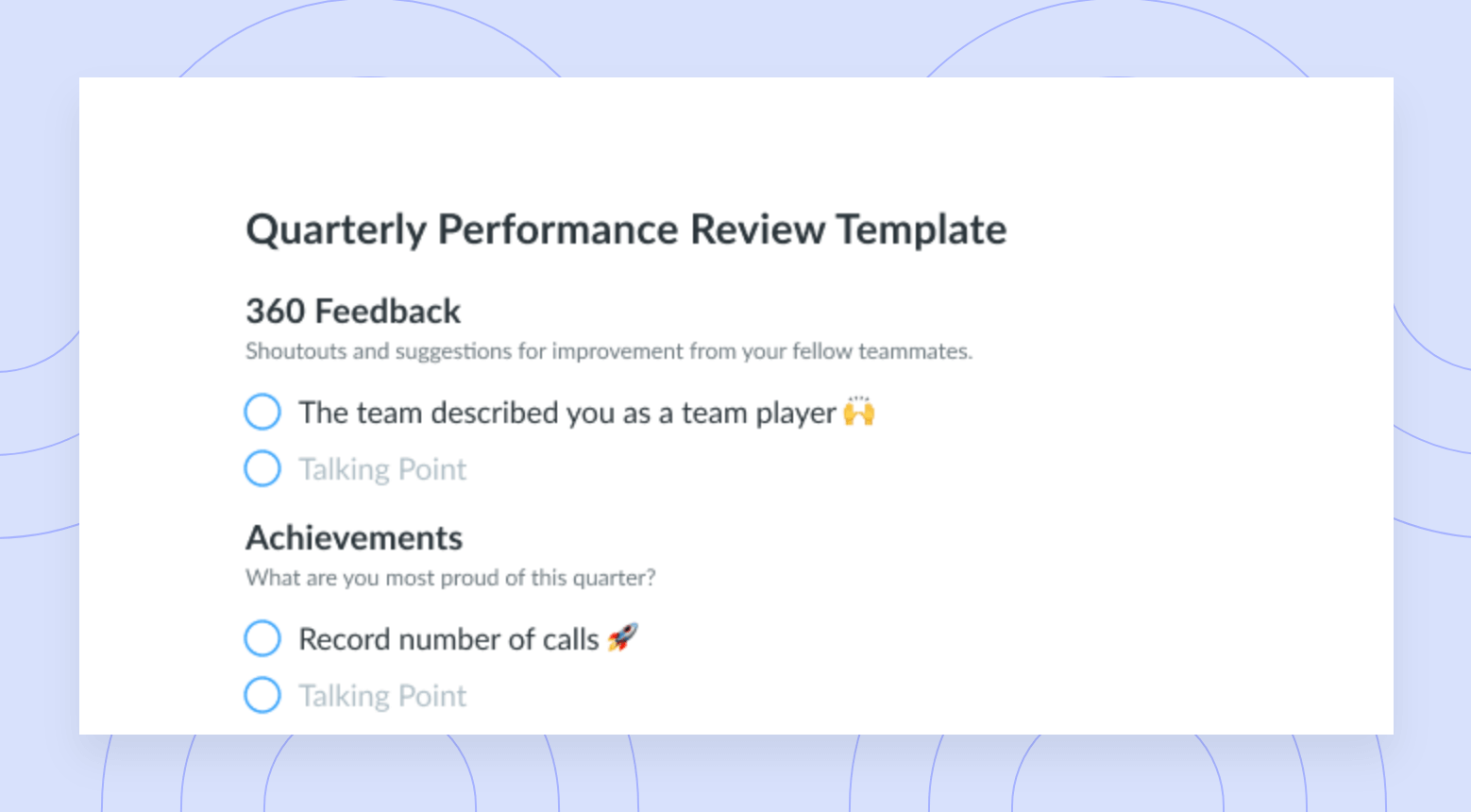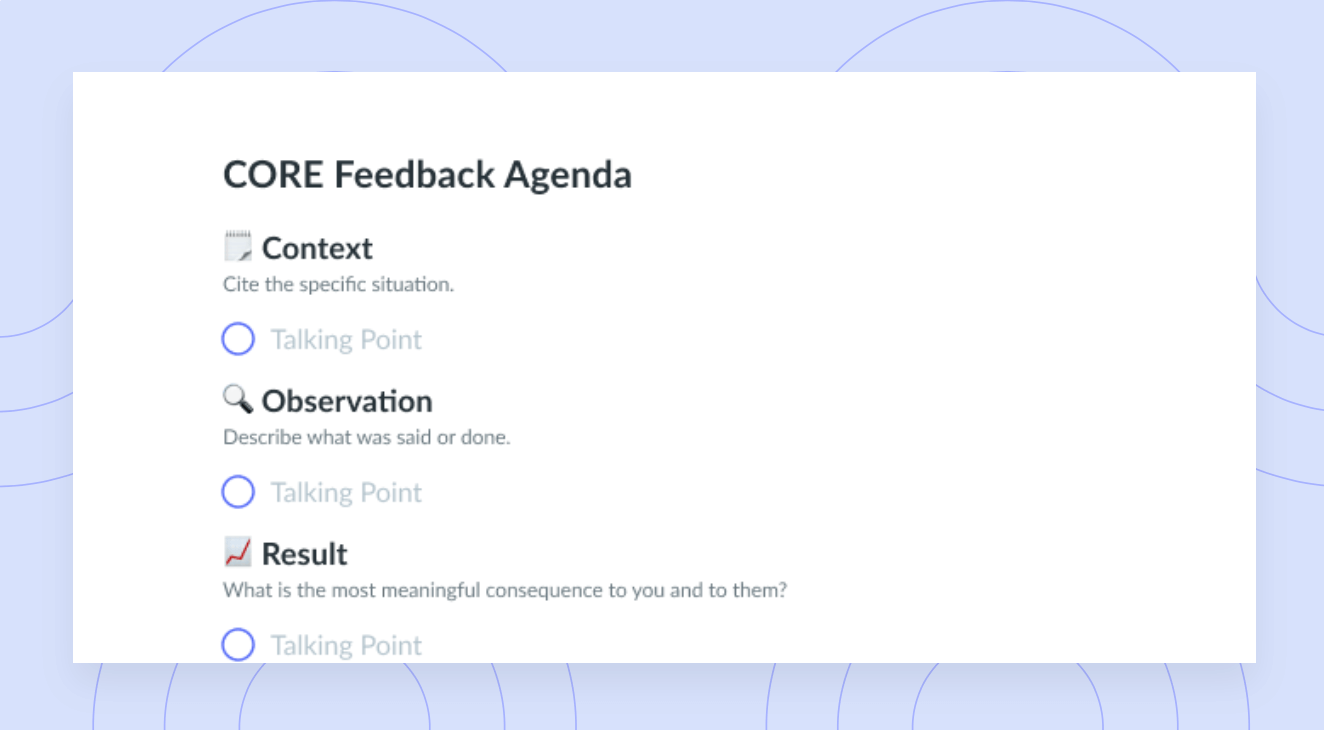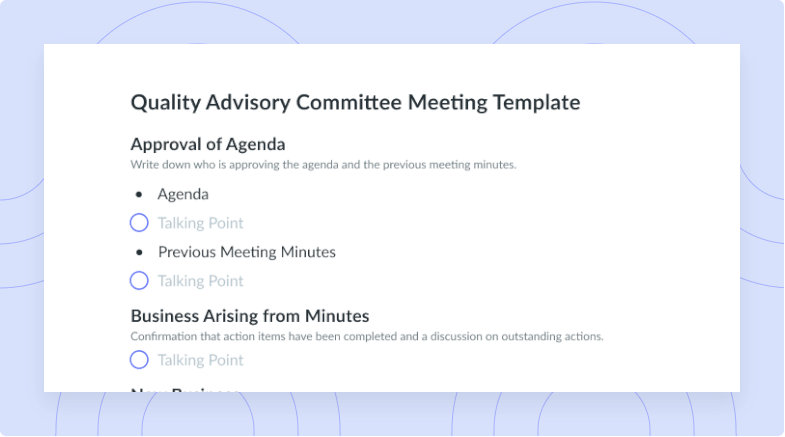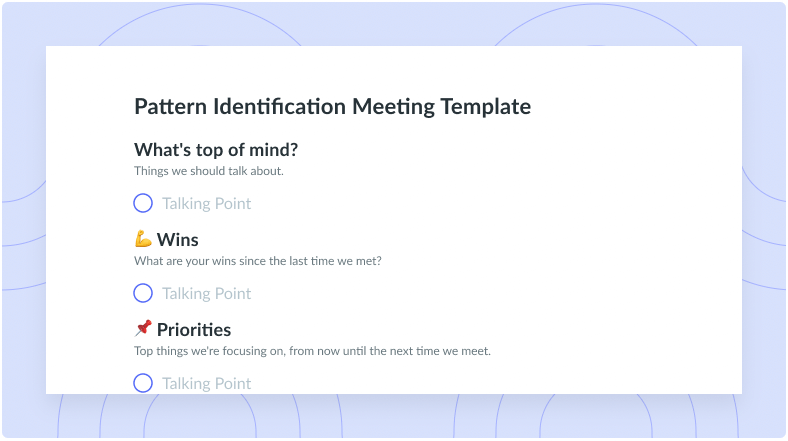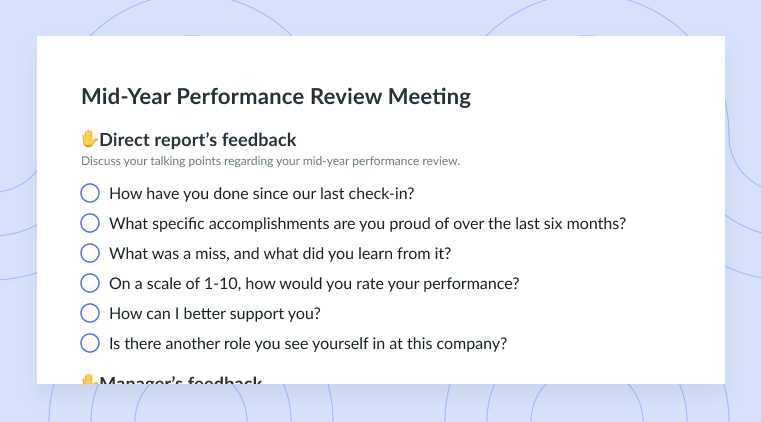How to Conduct Effective Performance Appraisals
Learn why performance appraisals are important and how you can use them to deliver incredible feedback in this blog.
Picture this: You head to your manager’s office for your bi-annual performance appraisal meeting. You’re not looking forward to this one. During your last performance appraisal, you received a ton of constructive feedback but little instruction on how to improve. You left the meeting feeling confused and defeated. You have no idea what to expect this time around…
Performance appraisals can feel daunting for managers and employees alike, but they don’t have to be! Let’s take a look at what performance appraisals are, see why they’re important, and explore nine different performance appraisal techniques you can use to deliver incredible feedback.
- What is a performance appraisal?
- What are performance appraisals used for?
- The benefits of performance appraisals
- When should performance appraisals take place?
- 9 types of performance appraisals
What is a performance appraisal?
A performance appraisal is a process for evaluating and documenting how well an employee carries out their job. Performance appraisals evaluate an employee’s achievements, skills, and growth over a specified period. These reviews are also used to evaluate overall work performance, identify strengths and weaknesses, and set objectives for future performance.
Performance appraisals help employees understand what they’re doing well, how they can improve, and what is expected of them in the future. They’re also known as performance reviews, employee appraisals, and evaluations at some companies.
What are performance appraisals used for?
- Organizational performance: Businesses can use performance appraisals to deliver high-value feedback on work to improve employee morale. Appraisals are also opportunities to justify wage increases or even decisions to let go or demote employees.
- Employee satisfaction: Productivity increases when employees feel appreciated and like they are a part of something bigger. Performance appraisals offer an opportunity to thank employees for their hard work, compliment their performance, help them with their professional development, and determine how to best position them for growth opportunities within the company.

Run efficient meetings, come to a decision, and get back to work
Level up your meeting habits to boost engagement and productivity with a collaborative meeting agenda. Try a tool like Fellow!

The benefits of performance appraisals
When done right, performance appraisals are a great way to gain insight into your employees’ experiences within the company. Reviews are also the perfect time to set expectations and goals with employees, increase employee confidence, and make it easy to identify improvement areas within your team.
Hosting regular performance appraisals is a great way to promote a feedback culture within your organization. Did you know you can use Fellow to share real-time feedback on meetings, projects, and performance? You can also use our tool to keep a history of the feedback you exchange during performance appraisals to visualize your team’s growth.
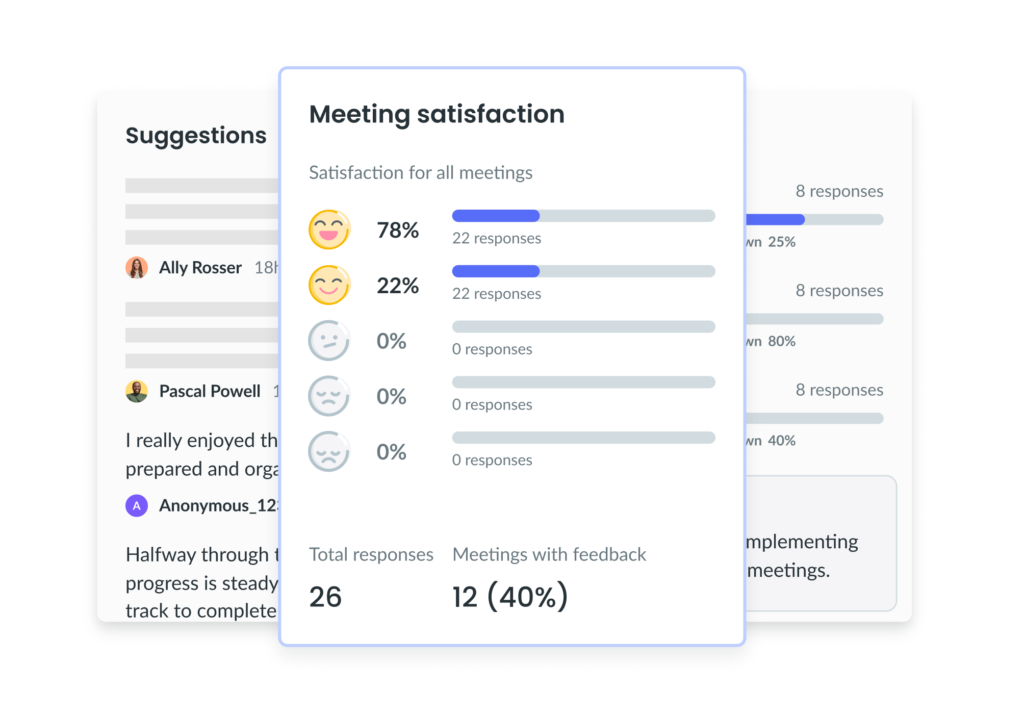
When should performance appraisals take place?
Performance appraisals can be conducted at any time but are most commonly delivered annually, semiannually, or quarterly. Most companies conduct performance appraisals every three to six months to ensure that feedback is relevant and timely.
Remember that some employees will need to be reviewed more frequently than others. Leave room in your calendar for situational reviews when specific behaviors need to be addressed or when you want to help fast-track an employee into a new position.
9 types of performance appraisals
Let’s take a look at nine different methods you can use to conduct successful performance reviews:
- Rating scales
- Checklist method
- 360-degree feedback
- Management by objectives
- Critical incidents technique
- Peer assessment
- Self-assessment
- Negotiated appraisals
- Client and customer reviews
1Rating scales
The rating scale method of performance appraisals involves measuring an employee’s performance by comparing it with defined behavioral patterns. For example, the Behaviorally Anchored Rating Scale (BARS) assigns a numerical value to specific examples of behavior as a basis for rating performance. Rating scales require a lot of preparation but are simple to conduct. On one hand, rating scales are focused solely on behavior, making them fair and personalized. On the other hand, this performance appraisal method is challenging to implement as it can be expensive and time-consuming.
2Checklist method
The checklist method is one of the most simple performance appraisal methods. Managers can easily conduct their reviews by having employees answer a series of yes/no questions for different traits. Each checklist should consist of a list of statements that describe the characteristics and performance of employees on the job. Before or during the performance appraisal meeting, the employee checks off statements that are relevant to their performance.
3360-degree feedback
The 360-degree feedback performance appraisal model involves gathering information on the employee’s performance through a questionnaire or survey from the individual’s managers and colleagues. This model may call for the employee to complete a self-assessment as well. This type of performance appraisal provides feedback to employees from a variety of sources and can reveal specific career development areas that other models fail to identify. By drawing on information from those who work closely with the employee, leaders can better understand an individual’s strengths and weaknesses from a variety of perspectives.
With Fellow, you can efficiently gather comprehensive 360-degree feedback for performance appraisals. Send the right feedback questions to your direct reports to gather intel in one place for easy review.
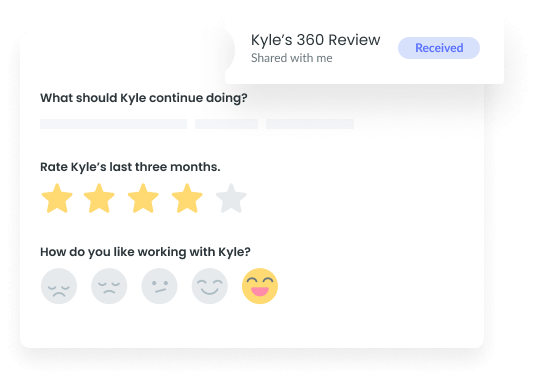
4Management by objectives
The management by objectives (MBO) process is a performance appraisal method that has a manager and employee work together as a team to identify strengths, weaknesses, and goals for the employee. Together, the leader and direct report set objectives, create a plan for the employee to achieve them, and host regular meetings to track progress and make changes to the plan as required. This type of review is ongoing and usually ends with the manager evaluating whether an employee has achieved their goals in the specified period of time.
5Critical incidents technique
The critical incidents technique (CIT) performance appraisal technique focuses on essential behaviors that determine whether a task has been completed well or not. Often called work sampling, managers are tasked with recording samples of employees’ good and bad performance as it relates to previously set performance objectives. CIT is a relatively easy performance appraisal model to conduct that doesn’t require employees to adhere to an external framework as it involves daily situations. However, because the method involves careful observation of day-to-day work, bias may occur in evaluations when recent situations are fresh in memory.
6Peer assessment
A peer assessment is a type of performance appraisal that is completed by colleagues who are a part of the same team as the employee being reviewed. The employee’s teammates may use a survey or ranking system to assess various areas of performance and give positive and constructive feedback. Then, managers can use peer assessment to deliver high-level feedback to individuals or the entire team. Peer assessments are a great way for leaders to gain a deeper insight into the day-to-day of their employees and encourage collaborative behaviors within the team.
7Self-assessment
A self-assessment is an opportunity for employees to self-evaluate or make judgments about their strengths, performance, and areas for development. A self-assessment may be one piece of a performance appraisal or can be used as a tool alongside another method to help employees gain self-awareness. Self-assessments also prompt the skill of reflective practice and self-monitoring to help employees feel more engaged in the appraisal process. However, self-assessments can be subjective and employees may under-evaluate or over-evaluate their performance.
8Negotiated appraisals
A negotiated appraisal involves using a mediator to aid in evaluating an employee’s work. This type of appraisal strives to place a greater emphasis on the good parts of an employee’s performance. It also helps promote effective two-way communication between managers and employees and can help individuals take ownership of their strengths and weaknesses.
9Client and customer reviews
Client and customer reviews are an option for employees who regularly interact with their company’s external stakeholders. Managers can ask customers and clients for feedback on their interactions with specific employees and determine how they perceive the organization. These reviews can give a snapshot of the employee’s success or point to areas of improvement that the manager wouldn’t have seen otherwise.
Parting advice
Imagine this: You head to your manager’s office for your bi-annual performance appraisal. You were stressed out about the last one, but have high hopes this time around. Since your last review, your company has set new standards for performance appraisals and your manager has tested a variety of formats to see what works. Now, you know they will be able to deliver concise, high-value feedback during your review to help you grow your strengths and improve your weaknesses. Leadership has learned that better performance appraisals equal more productivity. Success! Don’t know where to begin? Start hosting meaningful performance appraisals with Fellow. Our tool offers a variety of features that can help you streamline the performance appraisal process so you can spend more time giving feedback and less time worrying about meeting logistics. See how you can level up your feedback delivery habits with Fellow today by hosting effective feedback sessions during one-on-ones and team meetings, easily documenting progress on goals, and holding one another accountable.





![Performance Review Calibrations: A Complete How-to Guide [+Free Template]](https://fellow.app/wp-content/uploads/2022/10/Performance-Review-Calibrations2.jpg)



